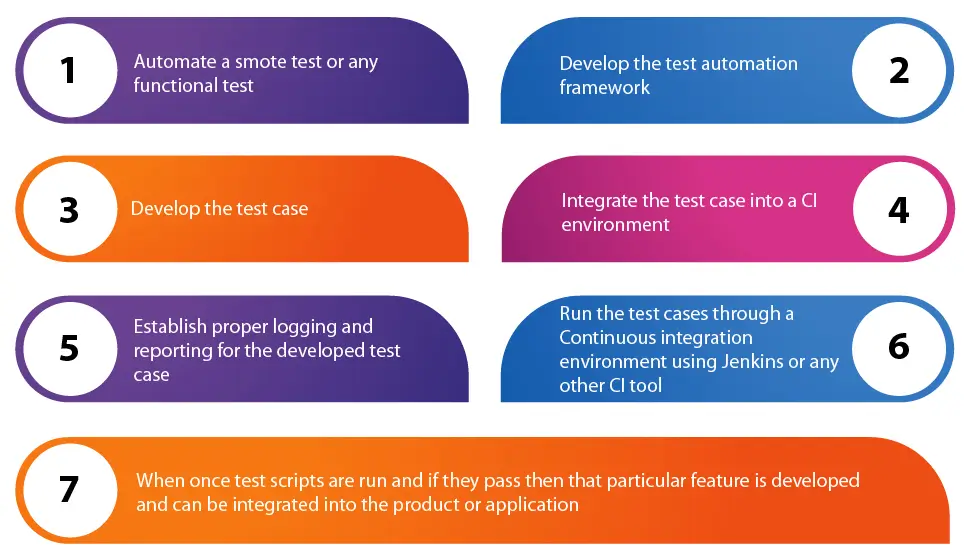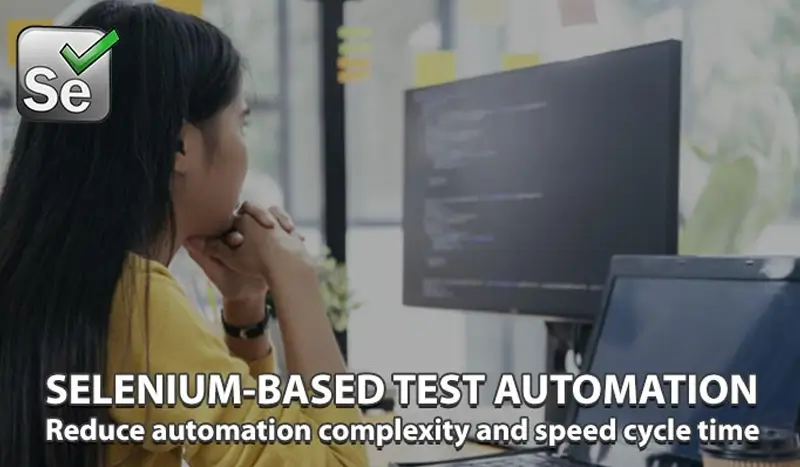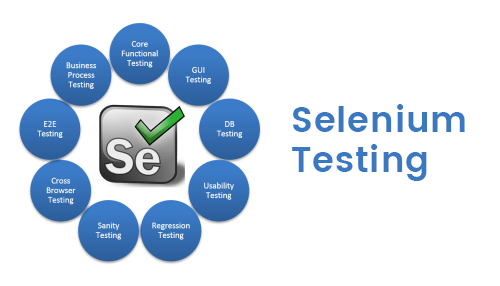Automation testing is important for the client seeking to build a software or application that makes a good first impression on the users without compromising the quality. To create a long-lasting impression on the users and drive consumers we do Automation Testing. It complements today’s agile software development processes and, helps in faster time-to-market, enhanced test coverage, increased customer satisfaction, and operational cost savings. Test automation is itself a vast area that covers both functional and non-functional tests, and Selenium test automation contributes to a period particular phrase – automation before and after the Selenium era.
Selenium is a portable tool used extensively for testing web applications. It can be effectively deployed on OS platforms like Mac, Windows, and Linux. It also supports execution across multiple web browsers. It’s open-source software that enables engineers to write tests in a number of programming languages like Java, Ruby, Perl, Scala, Python, PHP, and C#. Automating Selenium tests changed the landscape of test automation with all the flexibility it brought across domains and technologies.
Key Success Factors of Selenium Test Automation
1. Choose the right test automation framework
2. Follow up best practices to locate web objects
3. Skilled Selenium testers
4. Proven test automation process
5. Report failures in test results
6. Maintain Selenium tests as same as production code
Selenium Use at OdiTek Solutions
At OdiTek Solutions, we build robust test automation frameworks that leverage Selenium and Java, in offering rich solutions to our clients. We provide both fast and smart automation solutions in short agile cycles with leveraged components of Selenium. We evolve and update ourselves with the industries’ best practices that enable us to pass on the value to our end clients.
We also have an active R&D team focusing on newer frameworks and plugins, built on Selenium to give a leading edge to our clients in the automation we deliver.
Steps for Selenium Test Automation

Step 1: Automate a smoke test or any functional test
Step 2: Develop the test automation framework
Step 3: Build the test case
Step 4: Integrate the test case into a CI environment
Step 5: Build proper logging and reporting for the developed test case
Step 6: Run the test cases through a continuous integration environment using Jenkins or any other CI tool
Step 7: Integrate into the product or application
What Are the Best Practices for Selenium Tests?
1. Take a stance of the Application Under Test (AUT): If it’s a web application, then test automation Selenium is the best choice.
2. Leverage Page Object Model: POM, a specific design pattern, has become well-known in the world of test automation. The model enhances testy maintenance and reduces code duplication. The POM frameworks are comparatively more reliable and easy to maintain. Their test scripts are reusable and readable. It also removes duplication altogether and is the most preferred over all other models.
3. Usage of right locators: Selenium test automation framework best interacts with all browsers and ensures easy navigation using different types of locators. Some of these locators include CSS Selector, Tag Name, Xpath, Link Text, Class, and ID. So selecting the right locator is very essential.
4. Tests should be independent of each other: Tests should be kept as small as possible particularly with agile and DevOps processes in place. This eases the testing process.
5. Proper usage of Wait () and Thread () commands critical: Testers should go for careful usage of implicit wait and explicit wait instead of using the Sleep() command. The Sleep() command slows down the tests while with the Wait() command the test time is not affected.
6. Effective to use Java Runtime Environment (JRE): Selenium test automation framework is programmed with Java, so, is important to use the latest version of JRE to avoid any run-time errors.
Core Resources of Our Selenium Test Automation Services –
a. Selenium WebDriver – Supplying object-oriented APIs that provide support for new-age problems.
b. Selenium Grid – Allowing parallel execution across browsers and machines.
c. Zephyr – A test management tool that is available as an integrated plug-in for JIRA. Executing successful test automation across projects for a series of clientele.
d. Appium – With various test automation frameworks leveraging Appium for mobile applications automation, we offer testing on emulators, simulators, and mobile devices.
e. Ruby Engineers – Proficient across all programming languages like Python, Ruby, Java, etc. For automation testing.
What Testing Types Can Be Automated by Selenium?
1. Compatibility Testing: Compatibility testing is done to ensure that the web application meets the desired requirements on the browser-OS combination. We need to test if the application can function properly in different types of browsers, and also check whether the video adds runs on every browser and screen size. Here, Selenium test automation will minimize the time and effort to execute the test cases.
2. Performance Testing: Run a series of performance testing to measure various parameters loading speed, navigation speed, responsiveness, and stability of the product. In such a case, an open-source tool like Selenium is easy to install and execute to get efficient and accurate results.
3. Integration Testing: The testing is usually done when all the modules codes are integrated separately and secondly when a new feature is added to the system. This requires lengthy test cases that require automation to fetch results efficiently. Selenium tests can make the process easy.
4. Regression Testing: You’ll require a series of test cases to check whether the new feature built works in accordance with the existing feature. Also, if there’s an adverse effect on the application due to the newly added feature. Again, Selenium tests will minimize the effort of using lengthy test cases while giving correct results.
INTEGRATION OF SELENIUM INTO HYBRID TEST AUTOMATION FRAMEWORK
An effective test automation solution – engineers quality upfront into the product, enables both developers and testers to take on their responsibilities with confidence and ease. For that, an automation solution needs to be E2E rather than focusing on independent modules. Integrate the Selenium test automation framework with other API automation framework to build an end-to-end solution. At OdiTek, we have an adaptive test automation framework that integrates into the CI/CD pipeline and promotes test coverage across API/services, UI, device compatibility.
Recent years have witnessed a significant rise in the demand for Selenium test automation. We effectively use Selenium test services to validate functionality and reuse the original scripts in pre-constructed test frameworks. If you’re looking for timeliness and budget-efficiency without compromising on automation testing quality, contact us today for the most suited and tailored solution.







